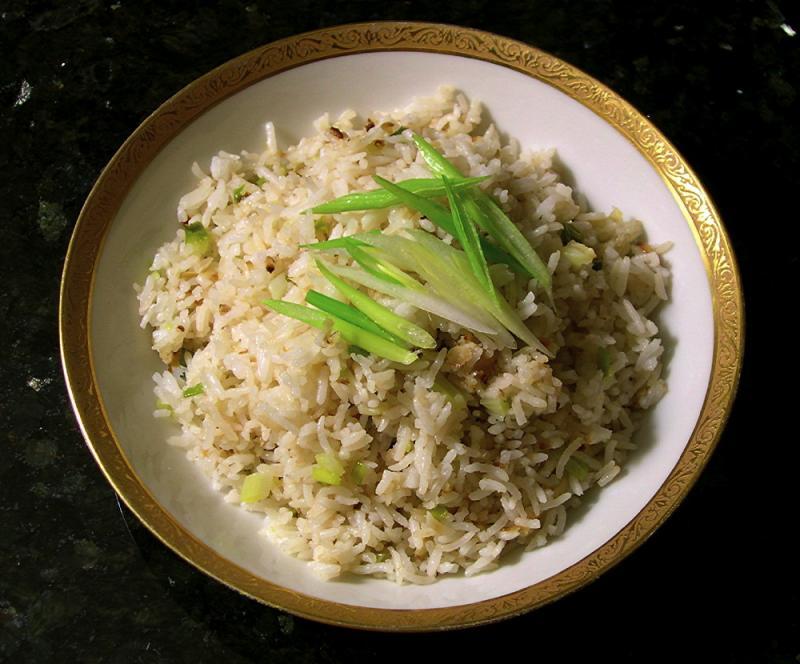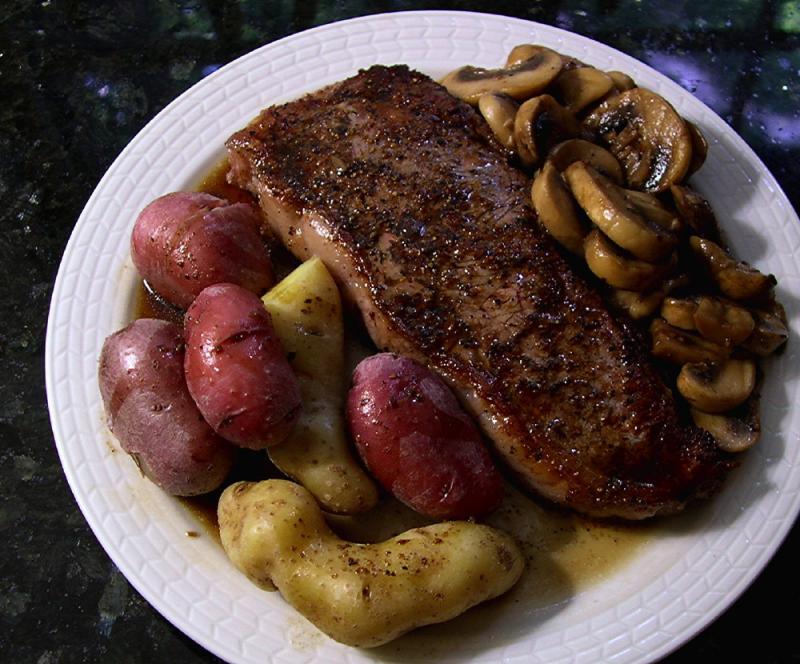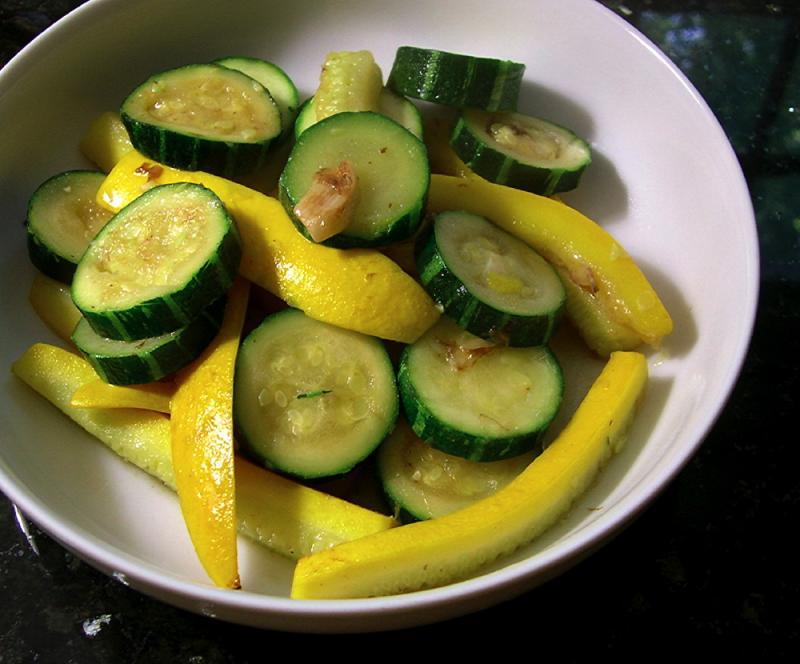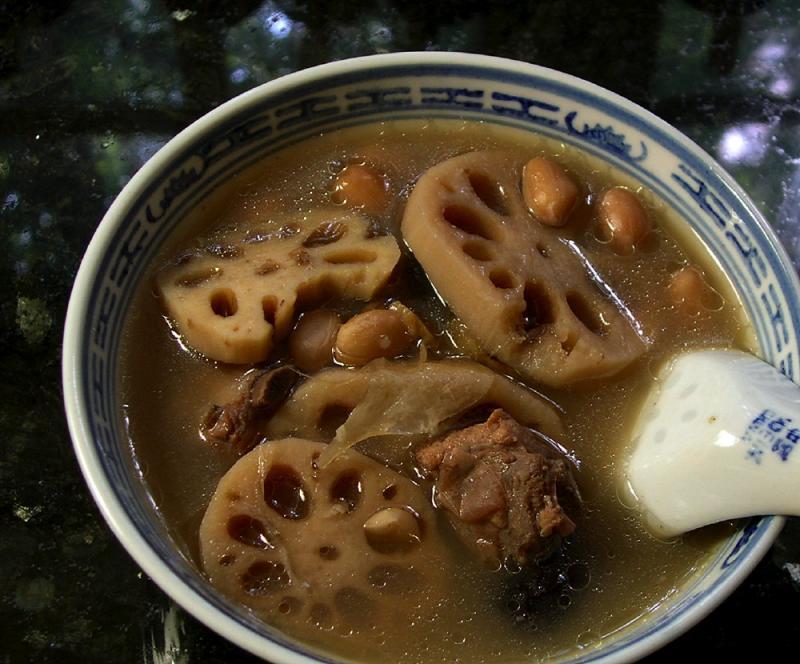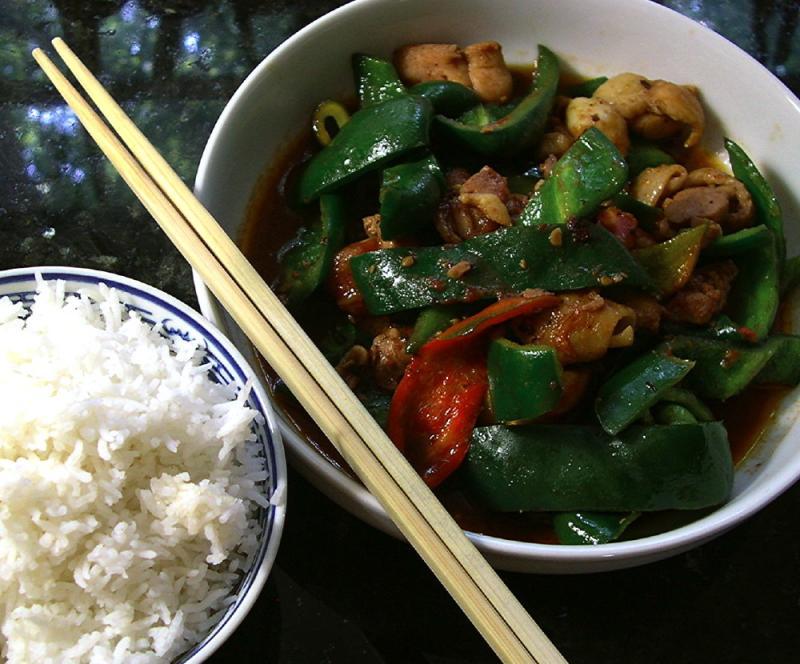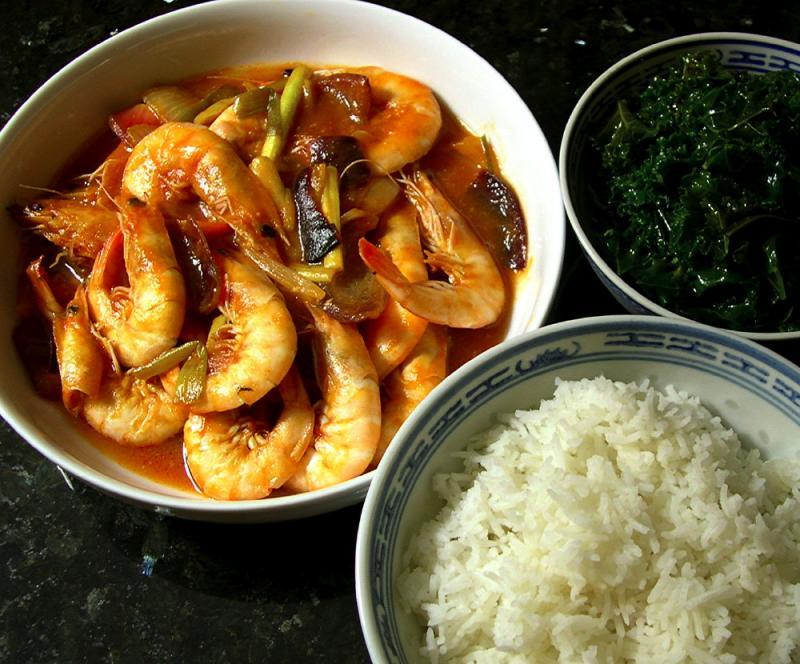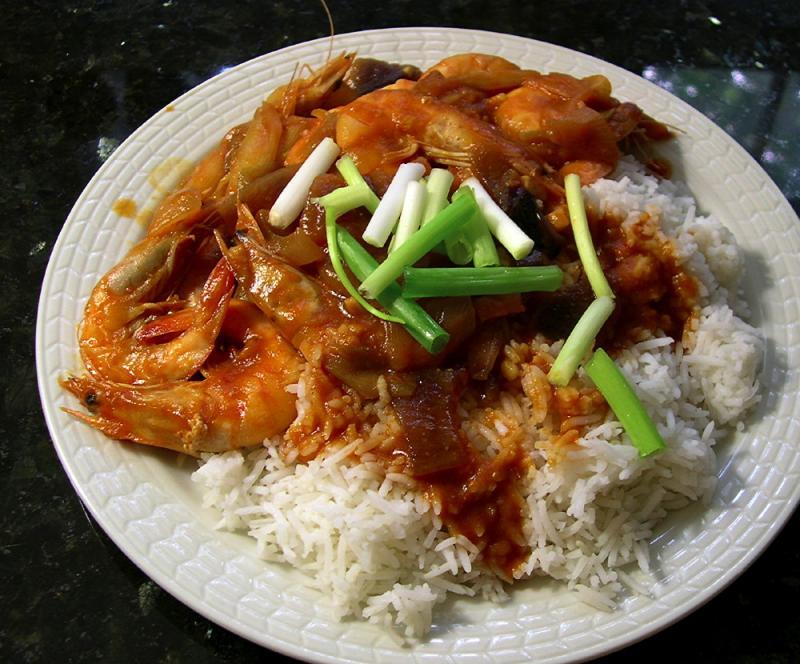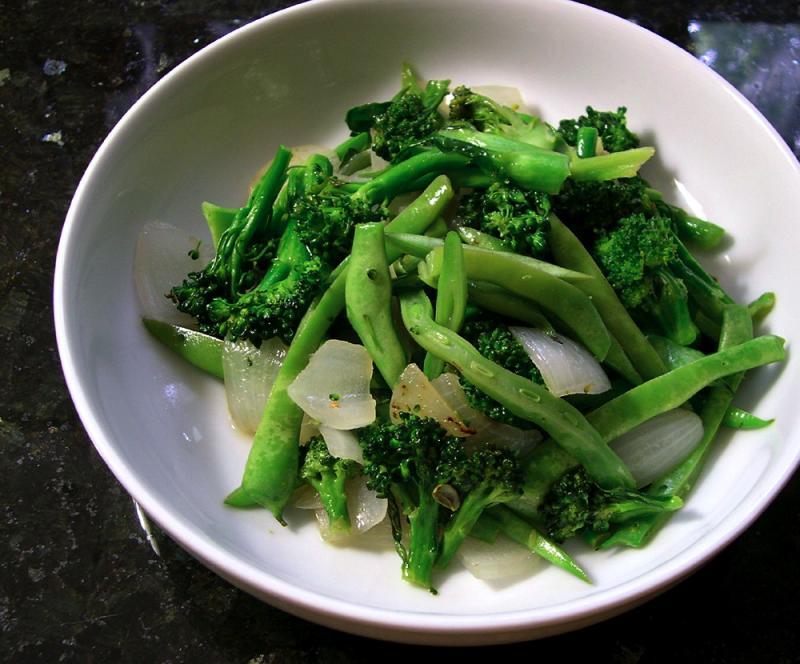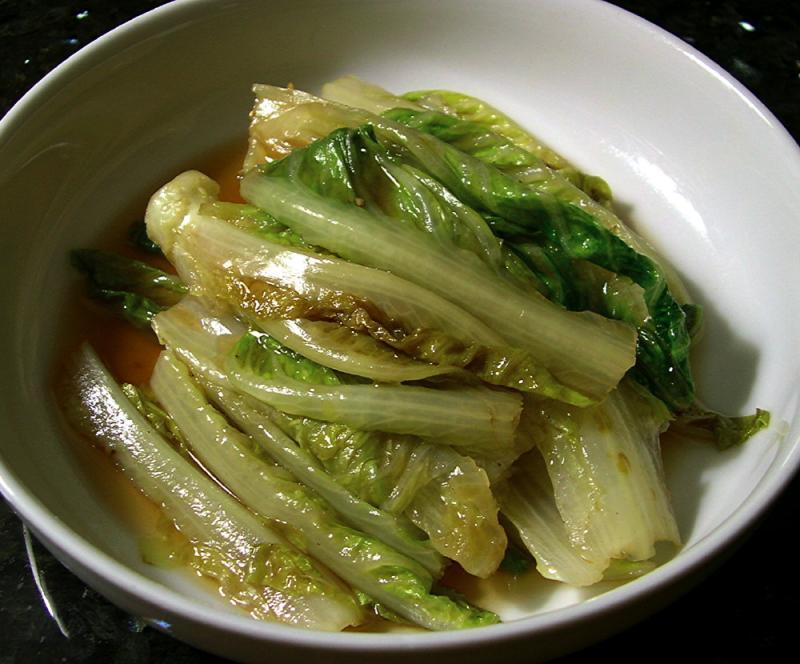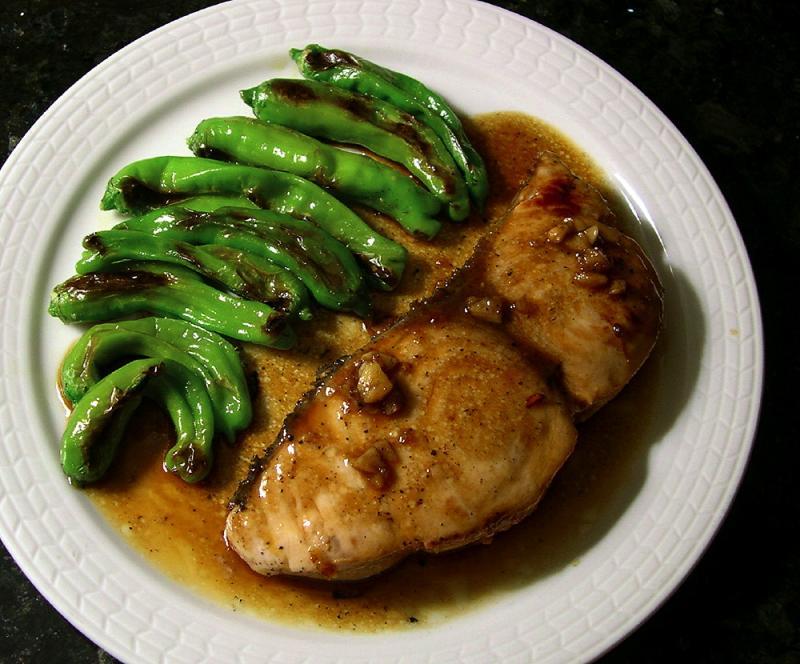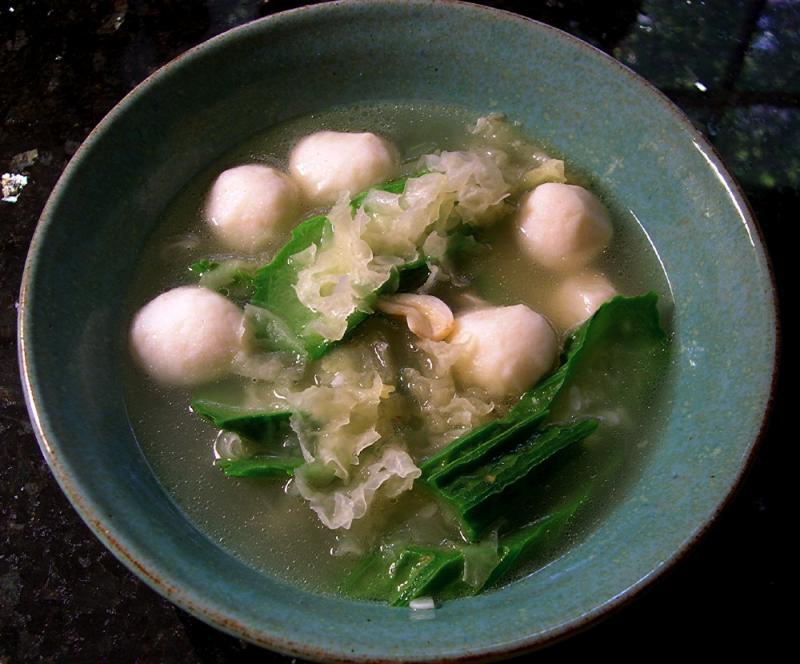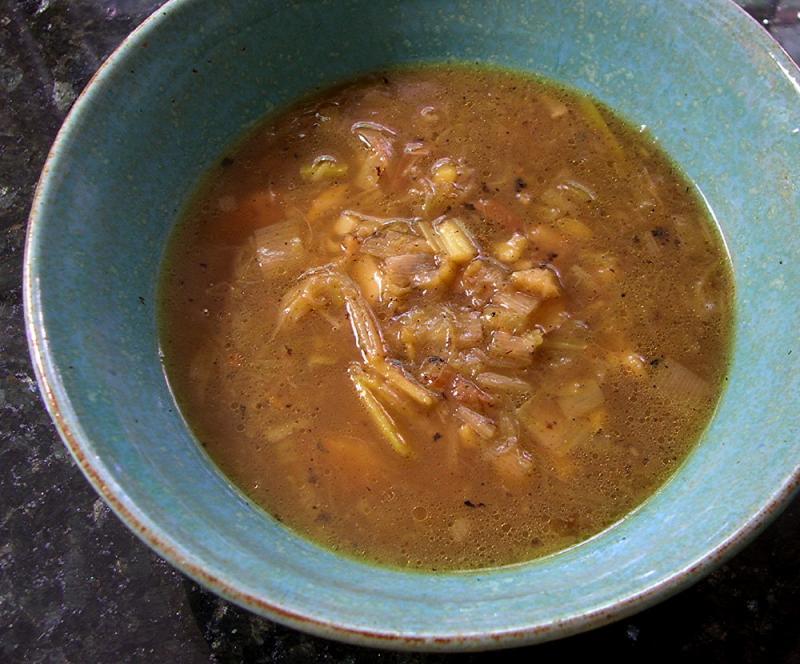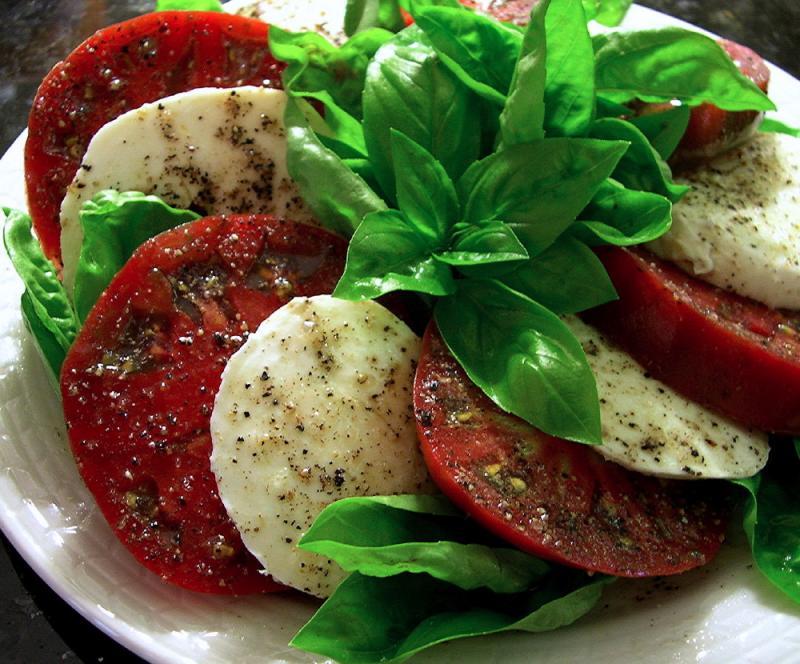-
Posts
3,810 -
Joined
-
Last visited
Content Type
Profiles
Forums
Store
Help Articles
Everything posted by huiray
-
Anna N's post gave me a nudge... A late dinner: • Roast top sirloin cap / picanha, seasoned with just coarse sea salt and black pepper.¶ • Sautéed green/light green zucchini sticks. • Coarse grated ginger and chopped scallion (lots) fried rice. Yes, every bit of the fat left on the slices was eagerly consumed. ¶ Browned/seared in the pan on all sides first, with vegetable oil; fat-side done last. Finished in the oven.
-
I always wondered about that too. Various recipes call for you to sauté or fry this and that in the oil with lots of stuff, then ask you to decant off the oil and throw it away. (((Shakes head)))
-
I also find that leaner cuts have a "meatier" texture/taste. Sometimes I crave a lean medium done steak with A-1 but, I do however, mostly prefer a well marbled cut done medium rare with some nice Char on the grill. To each his or her own, and to different cuisines too. If I had a plate of KL Hokkien Mee and it was NOT done with lard, glorious pig lard, and with PLENTY of pig fat lardons (rendered cubes of pig fat) scattered into and on it, it would be a severely defective dish. Somehow I suspect that many (traditional Chinese heritage) diners who appreciate this dish would also think so, I think. ;-) ETA: Brazilian picanha usually requires the thick layer of fat to be left on while cooking - I must assume that you will not be indulging in this. As you said and I concur, to each his or her own. (I found it interesting to read about your preferences regarding tri-tip, as it sits next to/close to the picanha cut, a.k.a. top sirloin cap or rump cap in the USA.)
-
Returning to *pantry* items / dried goods: Why not something like this? I think the base items are just fine, just get the better quality ones if one wishes. One of the best IMO are the Myojo Chukazanmai varieties - which also come in nama ramen types ("fresh", usually kept in the refrigerated sections of the groceries) other than the glossy paper pouch sealed dry types (which will have a pack of dry seasoning and a pouch of liquid soup stock inside the main pack).
-
@pastameshugana: heh, well now you know. BTW the "angled loofah" I used has several names/synonyms in Chinese depending on who is talking about it. The Google image answer set for one of these is especially useful for seeing lots of ways of using Angled loofahs in all sorts of delicious dishes. :-)
-
Now that's my kind of dish! Clean flavors. You now have it - but I'm a little surprised you can't find calamansi in NYC. I vaguely remember seeing it here and there in stores in Chinatown, but that was years ago. Try some of the stores - maybe that Malaysian/Singaporean/Indonesian/Filipino store on Mulberry, called Asia Market Corp.? If "calamansi" draws blank looks from folks, try asking for "酸柑" ("sour tangerine") and show them a pic of it, maybe? (Google image set) BTW calamansi is used throughout SE Asia, not just the Philippines.
-
Various meals. ------------------- Lunch • New York Strip Steak, salt-n-pepper, pan-fried. • Sautéed button mushrooms. • Simply boiled Red Thumb & Austrian Crescent fingerling potatoes. • Garlic-sautéed light green/dark green zucchini rounds & yellow zucchini strips. --------------------- Lunch • Lotus root & pork spare ribs soup, with various additions. • Sliced de-boned chicken thighs stir-fried w/ garlic, poblano peppers, black bean - garlic paste, Shaohsing wine, etc. • White rice (Basmati). ----------------------- Late dinner • Pacific white shrimp sautéed w/ white onions, TOMATO KETCHUP ("Simply Heinz", the one w/ cane sugar in it, not HFCS), loads of chopped scallions, a bit of Gula Melaka, some rice vinegar, some rice wine (ryori-shu [MRT]). • Fresh chopped kale (de-ribbed) poached in chicken stock. • White rice (Basmati). ------------------------- Lunch • Remainder of the shrimp & Poblano peppers dish from the previous day (yes, the shrimp became a somewhat "rubbery" when it was reheated) on white rice (Basmati). I had hesitated slightly when cooking the shrimp for dinner the previous day but then thought "what the heck" and dumped the full pound of it into the pan. • Broccoli florets, Roma beans & white onions sautéed in vegetable oil. ------------------------- Lunch • "Chow Yau Mak Choy". Romaine hearts stir-fried w/ really hot oil, julienned ginger, oyster sauce. • Pan-fried Blue Marlin steaks, marinated similarly as was described here, for comparison's sake. On balance I think I prefer the swordfish. • Sauce from deglazing of the pan w/ ryori-shu. • Pan-toasted salted fresh whole shishito peppers. • Boiled Austrian Crescent fingerling potatoes. (not pictured)
-
-
Today - Leek & Potato soup. (and onions, of course) Not blended, I prefer soup with solids floating in it - as I'm sure some may have noticed about my soups in general. The ingredients included a couple of leeks, small red Yukon potatoes (skin on), cipollini onions, bay leaves, sea salt, good olive oil. Darn, I partially burnt the onions when sautéeing them...and fished out most of the burnt pieces, but not all. The soup tasted fine, anyway. :-)
-
Nah, I think I'll leave it here - especially in light of the spirit of the tentative new "digression allowed on threads" discussion going on.¶ It might also suggest to some that one could think about other "Chinese Regional Cuisines" or even SE Asian adaptations of "Chinese Cuisine" to try other than "largely" Szechuanese, perhaps, when whipping up their next dinner? For those who are interested, here are links to the publisher's website relating to the books mentioned in that "Heritage Cookbook Series" referred to above, which also give peeks into the books. (Click on "View Sample") http://www.epigrambooks.sg/madam-choys-cantonese-recipes/ http://www.epigrambooks.sg/irenes-peranakan-recipes/ http://www.epigrambooks.sg/uncle-laos-teochew-recipes/ http://www.epigrambooks.sg/madam-krishnans-south-indian-recipes/ http://www.epigrambooks.sg/robins-eurasian-recipes/ ¶ Besides, I'm not too enthusiastic about moving all discussion of "Chinese" cooking into the "China" threads. Although I appreciate that it is useful in a sense to have Chinese cookery gathered in one place - the China threads (and ditto the other regional threads) - it still always seems to me to smack just ever so slightly of ghettoization of "ethnic cuisine". Why not discuss any and all cuisines in the relevant threads - where one describes what one had for dinner, or lunch, or whatever?
-
Thanks for the replies, folks, regarding Szechuanese/Dunlop recipes/dishes. That's true, Liuzhou, you do cook other stuff. (Nice blog you link to) Well, I actually don't cook much from cookbooks although I leaf through them to get ideas. I also often use the internet to look up online recipes. I actually have Dunlop's "Land of Plenty" :-) as well as other cookbooks on Chinese cuisine written in English but can't really say that one or the other is a "must-have" or is highly authoritative or useful to all, since I generally don't use the recipes there directly or word-for-word anyway (but sometimes do). Still, for those interested what I have lying around include: Land of Plenty - Fuchsia Dunlop - mentioned above; A Tradition of Soup (Flavors from China's Pearl River Delta) - Teresa M. Chen; The Hakka Cookbook (Chinese Soul Food from around the World) - Linda Lau Anusasananan; Classic Chinese Cuisine (I have both the hard cover edition and the later softcover updated edition) - Nina Simonds; Madam Choy's Cantonese Recipes** - Choy Wai Yuen & Lulin Reutens (daughter of Madam Choy) and, although not strictly "Chinese"... Irene's Peranakan Recipes** - Irene Yeo & Elaine Yeo (Irene's daughter) **These are part of the "Heritage Cookbook Series". Other books in the series are: Robin's Eurasian Recipes, Madam Krishnan's South Indian Recipes, and Uncle Lau's Teochew Recipes. Each one details dishes from Singapore and Malaysia, mainly, done in the tradition of those cuisines referred to. They are slender "half normal sized" books, no pictures, recipes written out straightforwardly in a "just the facts ma'am"-style, with comments and some footnotes; with a personal preamble and back-story from the author relating to the subject matter. I linked (above) to the amazon pages for the two I have.
-
Probably some flew into your hair or onto your clothes and you redistributed them all over the house when they fell off gradually? Interesting fish and dish.
-
Does anyone here on this thread do non-Dunlop recipes when it comes to Chinese (in the broad sense) dishes? Just wondering. Perhaps free-wing it without benefit of Dunlop? I also wonder sometimes if Chinese regional cuisine other than Szechuanese is appreciated here... ;-)
-
Friday/Saturday shopping this weekend: Goose the Market: – Fresh Pacific white shrimp (harvested Friday; Bedrock Springs Seafood Farm). – Fresh Blue Marlin "steaks". – Local Folks Food stone-ground Xxpress mustard (has jalapeno peppers in it). Broad Ripple Farmers' Market: • Funny Bone Farm – broccoli florets, Red Chard. • Silverthorn Farm – Black-type (indeterminate) tomatoes, Red Russian Kale, Black Cherry tomatoes. • Yeager Farm Produce – Shishito peppers, Angled Loofah, small-sized Indian Chu Chu eggplants. • Eden Farms – big head of collard greens (hydroponic). • Fields Farm Fresh – orange sweet mini munching peppers, Japanese Black Trifele tomatoes. • Earthly Delights – Roma beans. • The Apple Works – Green-shelled eggs :-), from Miller's Fresh Eggs (packed 9/4/13). • Incredible Edibles – Various tomatoes: Black Heart, Breast of Venus, Big Cheef, Siberian Tiger. Kincaid's Meat Market: – A nice chunk of Top Sirloin Cap, fat left on.
-
Interesting question. Personally speaking, though, in a general sense I tend to think not.
-
Cocktailians? :-) I learned a new word today. I'm not that much of a cocktailian myself. I tend to pay attention to a store if it has a good selection of port, sherry AND MADEIRA ranging from decently-priced to more stratospheric regions, even if I don't drink that much of these. Note: NOT "cooking Madeira". Nice whiskeys and scotchs through the price ranges helps too, and definitely if the prices are good!
-

Guilty Pleasures – Even Great Chefs Have 'Em – What's Yours?
huiray replied to a topic in Food Traditions & Culture
I don't think any food should be thought of as a *guilty* pleasure. Just my personal view. Whatever it is, it is just something that one enjoys for whatever reason at that moment on that day or whatever time period one may hanker for said food. Everything in moderation would be nice, of course. Ketchup? It's a fine condiment. I enjoy it when I want it on my food or when I use it in cooking a dish - I don't feel any guilt about it. (In fact, I sometimes use it as a preferred savory component of certain cooked dishes - the particular taste of the ketchup is part of the likable (to me) character of the dish. Of course, some ketchups are better than others, with Heinz being my preferred one.) Instant ramen in those crinkly packs or in those styrofoam cups? They're fine. Campbell's Condensed Chicken Noodle soup, the one where you dilute it with a can of water - it's perfect for when I feel like it. For myself I try not to consider that there are foods, whether mass-produced or artisanal, that I am not supposed to eat just because it's not what a Foodie is supposed to eat or that is supposed to be completely unhealthy for me etc etc. Everything in moderation, no? Again, just my opinion, for my personal situation, and clearly other folks feel differently. There's a NYT article that I've quoted here on the forum elsewhere - about chefs looking for some of their favorite stuff in Aisle xx in the supermarket. (forgive me for quoting it here again - http://www.nytimes.com/2012/07/04/dining/top-chefs-say-that-sometimes-only-supermarket-brands-will-do.html?pagewanted=all&_r=2&) Wylie Dufresne said, in that piece, that “It’s actually a fuller life to try all that stuff. I would rather not be pious about things.” Peace. :-) -
Interesting. My experience (SE Asia then and the USA now) has been that tea was a very common beverage during a meal at Chinese restaurants - i.e. when one ate out - at least with diners of Chinese extraction; although beer was indeed also often consumed by, yes, the menfolk mainly. My father liked his beer, but it would be more common for him and the rest of the family (and most other tables around us) to drink hot tea during the meal at restaurants both high-end and low-end and any permutation in between with regards to Chinese cuisine. So did all of our friends and acquaintances. This applied to both simple meals out as well as banquets - tea would be provided and would be drunk (in between knocking back that Johnnie Walker Black with 7-Up, heh) by various folks. Naturally one would often have a soup to drink as well at "normal" meals (whereas at banquets, in SE Asia, in my time, the soup was a discrete course - if it was even on the menu - to be whisked away before the next course arrived). Of course tea was a certainty with dim-sum - "po lei" (pu-erh) was the "standard" there, often with "kuk fa" (chrysanthemum flowers) added in, when one would then call for a pot of "kuk po". For myself, I continue to order and drink hot tea with my meal when I dine out at Chinese restaurants.
-
Early breakfast: Sapporo Ichiban chicken flavor instant ramen (Oh, the horror!!! NOT.) gussied up with chopped Rainbow Chard, a couple of poached farm eggs, a splash of veggie oil, and some of the leftover sautéed zucchini from the previous day's lunch. :-) I eat "instant ramen" without any feelings of guilt. It's not gourmet food but it's decent, some brands better than others. ;-)
-
Nice list, Panaderia. Sent me off to the Google again, you did! :-) Those paiteña onions - are they these? Looked up the Sachataxo passionfruits too - Interesting. I presume they will be for flavoring some of your bakery products?
-
Looking forwards to updates on that guinea hog(let), sparrowgrass!
-
Jaymes, Ah, OK, that makes more sense - drinks for the guests at a party of some sort, paid for by the host. Those (few) places I mentioned were where you, the diner, was expected to pay for what you consumed of what was offered on the table. The waiter would count/note the bottles that you would open or ask to be opened, with or without additional provision of a glass of ice. They were definitely not "free for the taking". :-) Yes, at banquets and weddings and such there would often (but not always - it depended on the place, the hosts, the type of celebration, the "tone" or "classiness", so to speak, of the occasion) be bottles of stuff like Seven-Up, Fanta (a carbonated orange drink), Coke (Coca-Cola), Pepsi, assorted other locally produced stuff including the lemon-lime things you mentioned, etc., for the enjoyment of the guests as they pleased. It also used to be that hard liquor would be provided at banquets/weddings, if the host was wealthy enough; and in certain segments of society it was a status symbol to provide higher grades of things like Johnnie Walker Black (JW was popular in SE Asia during my time, long long ago - with JW Black being the premium grade then, IIRC) or Hennessy VSOP (and maybe XO to selected guests or tables - like that of the wedding party itself) to every table, and cases of it would be brought in to the celebration. Of course, suitable appreciation of the stuff was wildly variable, with a GREAT DEAL of happy and indiscriminate splashing of said JW Black etc into glasses of Fanta or Seven-Up (a favorite of the ladies), while a few others (relatively few) would look on with tut-tutting noises under their breaths. At least some others would have the decency to cut the stuff with plain water and ice. All of this is an historical note, of course. :-D
-
Not sure. Would you happen to have a photo or two from those days lying around somewhere? I vaguely remember seeing bottles of an assortment of beverages offered and displayed on the table itself only at a few places (of the "dai pai dong" or "dai chow" types, never at high(er)-end restaurants) when I was growing up years ago in SE Asia, and those - IIRC - were both carbonated and non-carbonated drinks often locally produced or bottled. I guess when you say "soda pop" you would mean sweet carbonated types - like the quintessential one, Coca-Cola or Pepsi?
-
-
To each their own, and I would expect to read sometimes about your marvelous pairings of wine with lots of sumptuous food goodies. Out of curiosity, though, would you be one who wishes to have some sort of grape-based Western-style (i.e. French viticulture derived) wine when you are having a meal of fiery and mouth-numbing Mapo Tofu, "Water-cooked fish" (Szechuan-type, fish fillets cooked in chilli oil plus other stuff) and other such things? Or, for that matter, delicate Cantonese steamed fish and lots of similar examples? I ask because I have always been curious why so many folks in the West insist on having Western-style wine with foods that were never meant to meet with such beverages as conceived in their taste profiles. (Yes yes, I am quite aware of the interest in blending Western wine practices/preferences with non-Western foods that did not have Western wines in their taste profiles when they were brought into existence) I imagine also there is a fair bit of cultural conditioning involved - such as the expectation that wine (Western-type) be involved whenever a meal is to be thought of as "special" (if other than "routine" - see French and Italian cultural mores), no matter what the food type is. Just wondering.



